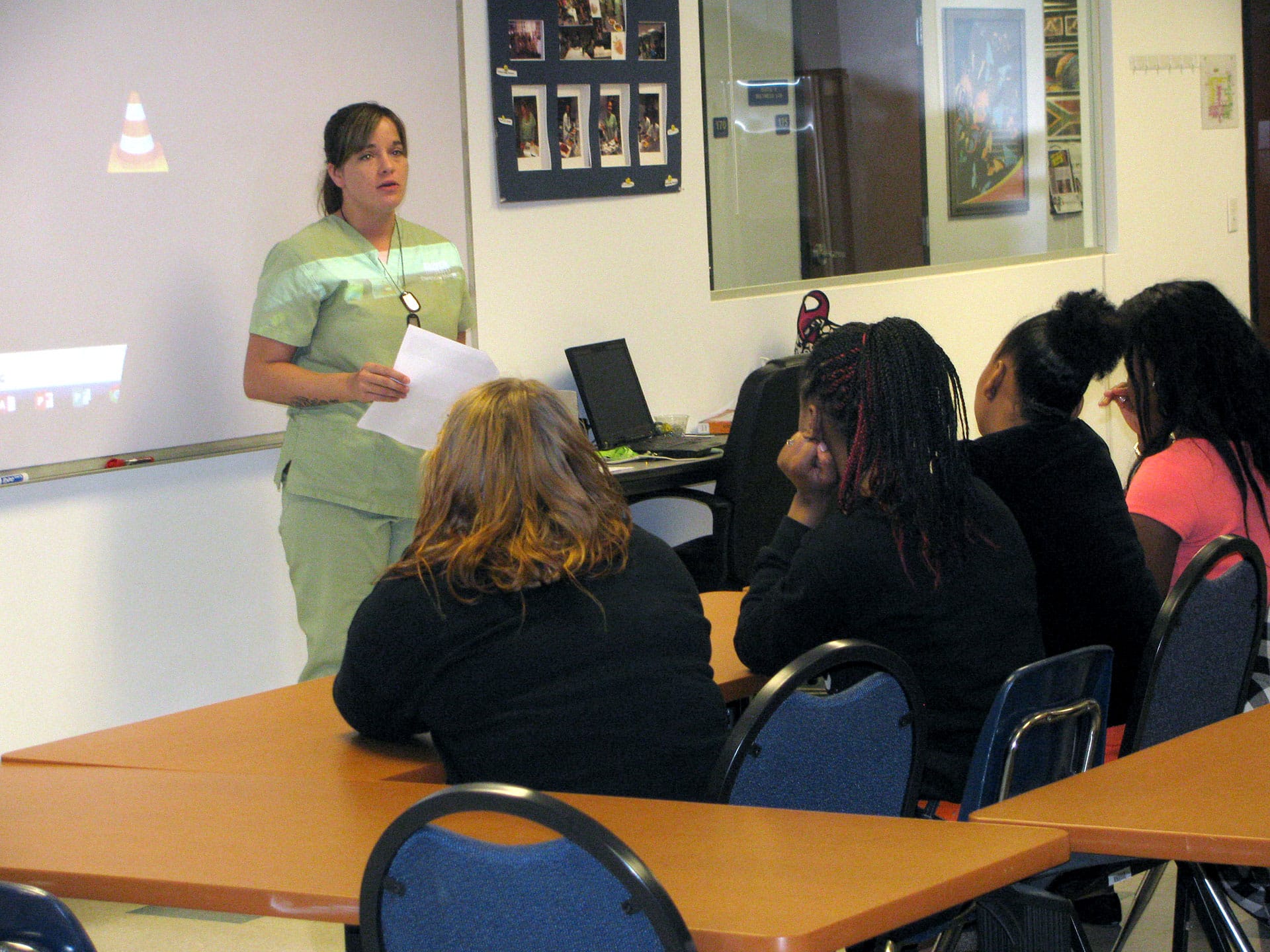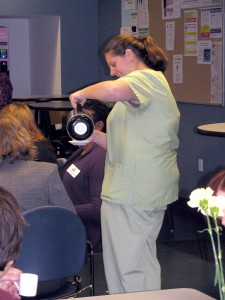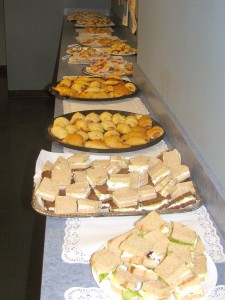Recently, the Port St. Lucie campus sponsored a “High Tea” event for Treasure Coast PACE. PACE Center for Girls Treasure Coast (PACE) is a statewide not-for profit, 501 (c) corporation which provides at-risk girls and young women a chance “for a better future through education, counseling, training and advocacy. It provides a “gender responsive” day program for adolescent girls ages 11 to 17. It is an effective community based alternative to institutionalization or incarceration.” Vickie Colter is the Executive Director of PACE, which has 19 locations in Florida.
The girls who attended were from 7th and 8th grade in local middle schools such as Forest Grove and Oak Hammock. The faculty and staff who organized, gave nutrition presentations, prepared tea and healthy snacks, cleaned up, and conversed with the PACE students about KU.
Dean Jane Quattrocchi welcomed the girls with an inspirational “60 Minutes” Bob Simon video regarding a town in the Congo that formed an entire orchestra with its residents, none of whom were musicians. They had no instruments and no one knew how to read music. One resident decided to put an orchestra together and gathered used / broken instruments from international volunteers, while willing citizens took free lessons, rehearsed and formed a choir. Their first performance was in a warehouse and featured Beethoven’s “Ode to Joy.”
“Girls can do anything!” said Dean Q. “If you’re open to learning, we’re open to teaching you.”
Dietetics & Nutrition student Jennifer Strickland presented the history of High Tea, which is a 3,000-year-old tradition brought to England from China through the Danish. London’s upper class would hold Tea at 4:00 in the afternoon in Hyde Park, serving light and sweet finger foods, while the lower classes would have High Tea with their meat dinners at 5. The English added “cream & sugar” as well.
Strickland said that an explorer discovered the medicinal qualities of tea in the 17th Century. Lady Catherine of Braganza, wife of King Charles II, brought tea to the Court in the mid-1600s, while the Duchess of Bedford, Anna Maria Russell, brought tea into the meals of the masses in the 1840s. The ladies would sip up to 20 tiny cups of tea daily for their health.
Jennifer Malpass, another Dietetics student, explained the 5 types of tea (Black, Oolong, Green, Red and White); the differences in color and tastes; and how to “properly take tea.” She also discussed the different caffeine quantities in tea, with over-fermented black tea having the most caffeine and white tea being the least-processed and having the least caffeine.
Then D&N student Dawn Morales discussed the risks and benefits of tea. She said that everyone develops toxins in their body, and that tea contains natural anti-oxidants. Morales explained a study that has been done on normal hamsters versus high-fat hamsters, where hamsters fed black or green tea had lowered toxins. Green tea has the most antioxidants.
Over-consumption of tea containing oxylates can be bad for the kidneys, but most negative effects of tea involve caffeine. Morales cautioned the group not to mix tea with energy drinks or other items already containing caffeine.
Dietetics & Nutrition faculty and students had prepared delicious and delicate menu items from traditional High Tea fare, and improved upon the recipes to make them healthier. Dishes to go with several types of tea served included ham and cheese croissants, cucumber sandwiches, mushroom tarts, berries, cherry-topped cookies and cucumber water.
“Who would put cucumber on a sandwich?!” exclaimed one of the girls, although she did agree to take one bite and proclaimed it “not so bad.”
Online PSL-Psychology student Deanna Wilds talked to the girls about what it’s like to take online classes.








 My instructors believed in me. They were more than instructors, they tried to get to know you as a person and tried to understand your goals so they could push you towards them. Student services helped me find a job before I even graduated. Everyone was dedicated to my overall success.
My instructors believed in me. They were more than instructors, they tried to get to know you as a person and tried to understand your goals so they could push you towards them. Student services helped me find a job before I even graduated. Everyone was dedicated to my overall success.
